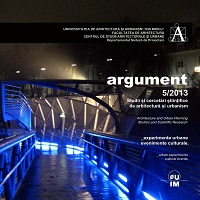ARHITECTURA ŞI DREPTUL LA LOCUIRE
ARCHITECTURE AND THE RIGHT TO HOUSING
Author(s): Barbora Černušáková, Catrinel MotocSubject(s): Architecture, Human Rights and Humanitarian Law, Ethnic Minorities Studies, Socio-Economic Research
Published by: Editura Universitară “Ion Mincu”
Keywords: human rights; evictions; lack of suitability; roma (gypsies); Baia Mare;
Summary/Abstract: In May 2012, about 70 Romani families were relocated from an informal settlement in Craica, Baia Mare to the offices of the former factory CUPROM on the outskirts of the town. The municipality carried out the eviction and relocation despite concerns that the CUPROM building did not meet basic adequacy criteria required by both Romanian housing regulations and international standards. The May-eviction was followed by another two waves of eviction in less than two weeks. This time, several other dozens of Roma families were moved to a second and third building of the same compound. At the time of the relocation, some rooms in the third building allocated to the Roma families contained cupboards hosting equipment and dangerous chemical substances used in the former chemical laboratory, including sulfuric and acetic acid. Warning signs were still displayed on the walls and the windows of the rooms. The same day the last Romani families were relocated, around midnight, few dozen adults and children started accusing nausea, vomiting, dizziness and headaches. Ambulances were immediately called to the location to provide medical assistance and two adults and 22 children were taken to the hospital. In this article, we will argue that the case of the eviction to inadequate housing conditions in Baia Mare is the result of – among other things – deficient legal framework that currently fails to set out standards for adequate housing and fails to establish accountability mechanisms for municipalities that violate such standards. On case studies researched by Amnesty International throughout Romania, we will illustrate how these gaps “translate” into projects that lead to housing in segregated areas, housing without provisions of basic services, housing in inadequate spaces such as former chicken farms, containers, or non-converted office buildings. We will show that these projects are at odds with international standards on the right to adequate housing applicable in Romania.
Journal: Argument
- Issue Year: 2013
- Issue No: 5
- Page Range: 29-36
- Page Count: 8
- Language: English, Romanian

